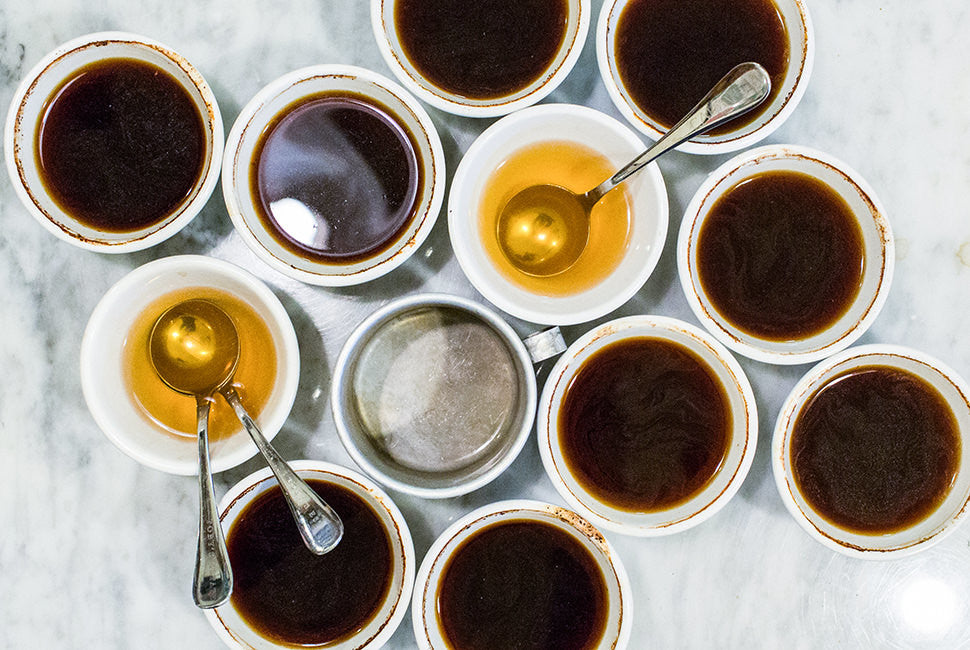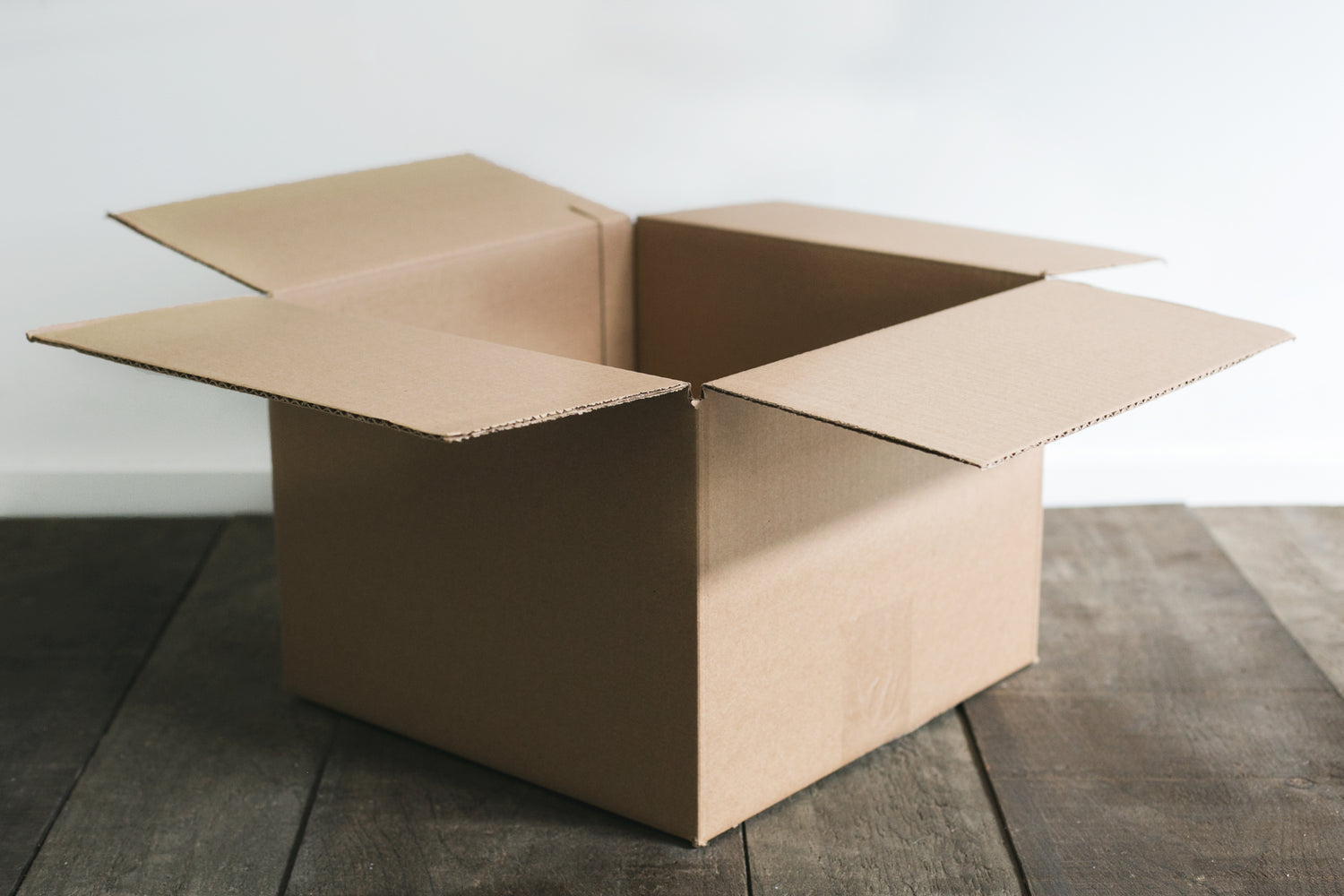What does your coffee taste like?

The sophistication of your daily dose of caffeine, according to Jonathan Withers, is vastly underestimated. “Coffee is such a complex piece of fruit that we’re doing a tremendous amount of work to, any facet of which makes huge to small ramifications in the cup,” says Withers, who’s young, careful with his words, and perfectly coiffed. As the green buyer at Toby’s Estate Williamsburg, Brooklyn flagship coffeeshop, Withers fulfills the oft-romanticized duty of traveling the world to source and buy the company’s small-batch coffee. Now, in the shop’s backroom, he’s using a large, framed illustration of the coffee shrub to prove his point. “The species of plant… where it’s grown, what elevation, how it’s watered, fertilized… fermentation, storage, transportation. It’s endlessly fascinating to think about everything that’s been involved. And that’s just to get the beans in the door.”
Through the cupping room’s window I can see what happens once the beans make their entrance. Human-sized bags of them slump against the walls. In the corner, a giant Probat P25 machine’s farm-implement-like blades revolve, cooling their daily load of 2,000 pounds of roasted beans for 150 accounts in the city. Beautiful twenty somethings order pour overs and espressos from the counter and return to benched tables to convert plant-based caffeine into man-hours.
Roasting, grinding, brewing and sipping: these are the known quantities of a coffee roaster, to the masses. What goes on in this small room at the back of the shop, a ritualized tasting called a coffee cupping, is less known, but more important to understanding how a coffee cherry becomes a cup of coffee, and the tastes and smells that journey eventually imparts. If the sum of a drink’s parts can become something more — a “soul,” for the indulgent — then cupping is a trip to worship at a half-reverential, half-raucous church of the bean.
For Withers and Allie Caran, though, cupping is also a routine duty. Caran, a coffee educator at the company’s Brew School, uses the altered brewing format and ritualized tasting style as an opportunity to teach about coffee’s many and varied sensory profiles; Withers cups the previous day’s roasts every morning at 7 a.m. as a form of quality control, and uses cupping notes as a standardized way to communicate with growers and producers of the raw, “green” product. For both, cupping is about taking on coffee as a serious beverage (and an enormously profitable business) rather than a treat. “You need this format to experience it,” Withers says. “Versus having a cup of coffee, where, yes, you’ll just sit there and experience that same gradient of flavors, but — I might not be distracted, exactly, but I’m sitting there, enjoying my life.”
Of the adult beverages currently in vogue — coffee, craft beer, wine and whiskey — coffee seems to lag behind in tasting comprehension. (That’s in spite of the fact that Americans in 2014 drank on average more than three cups of “specialty coffee” — coffee sold by businesses largely dedicated to selling only coffee — per day, according to the National Coffee Association Annual Trends Study.) Yes, the average drinker is far from illiterate in recognizing “good” coffee — Starbucks took the lead in quality coffee’s increased role in what is today a $48 billion coffee industry in America, and smaller, more boutique roasters like Toby’s continue to wage a coffee revolution in urban centers from Portland to Brooklyn. But for regular drinkers, discerning distinct tasting notes remains elusive.
“It’s very difficult to taste coffee,” admits Caran, who sports a stylish barista’s uniform of a black knit sweater, ponytailed black hair, a ring in the nose and a calculator watch on the wrist. “By nature most people, when they smell it and taste it, they’re like, ‘Oh, it smells and tastes like coffee.'”
She’s spot on; in fact, for the majority of my life, all I asked of coffee was heat and caffeine. My introduction to coffee was my dad’s brew, my sole tasting note of which was “motor oil.” I preferred my uncle’s brew, which tasted of “thinner motor oil.” The diner had “good” coffee or it had “bad” coffee. Now the coffee shops I go to sell single-origin Tanzanian Peaberry with notes of “bright acidity, peaches, and butterscotch.” Rather than “good,” I taste “great” — with a price to match. But I still can’t help but scoff at high-end coffee shop’s and roaster’s tasting notes of “peanut butter,” “graham cracker,” “bark,” and “guava” — even while I use similar words to describe craft beer and Scotch in tastings. Hence my visit to Toby’s. I hoped the cupping, more than ever used by amateur coffee aficionados rather than just industry experts to bring coffee’s complexities to light, would either reveal the divine clarity of the bean or provide an excuse to call bullshit.
The first lesson at Toby’s Estate is that cupping emerged as a method of pass/fail review for coffee lots in the mid-19th century. “You see pictures of the Industrial era, and it’s all old-school dapper men cupping coffee at big tables, ties behind their shoulders,” says Caran. Those dapper men were tasting almost exclusively for defective beans, something cupping still addresses today: by tasting three cups in a row of the exact same beans, pros can identify uniformity or any outlying defects.
The second lesson, as Caran and Withers set up 12 cups in four groups of three around a crowded standing-height table, is that cupping has little to do with any regular brewing techniques. The cups each contain 11 grams of fresh grounds (using the default standard of 1.63 grams of coffee to each fluid ounce of cup capacity), which are never filtered out. Using cupping sheets (mine a more amateur format, with sections for dry fragrance and wet fragrance, sweetness, brightness, body, finish and overall flavor; theirs with nearly the same categories, but a section for scoring, since they’ll be rating each coffee out of 100 points, plus an area for noting defects) we’ll smell each cup dry and wet, then “break” the cup by peeling back the floating grounds with a spoon to smell it once more. Then tasting, using spoons, spittoons and cups of water for rinsing — three times around, first for a general sense of the difference between cups, then for specifics. It’s all on a strict timeline, each moment of sensory evaluation awaiting its peak moment within the brewing process.
All of this plays out as a frenzy of sniffing, spooning, sipping and spitting. The break (at 4 minutes), the continuous brewing of the grounds (from when the water hits the coffee to the last sip) and the cooling of the liquid (from the 12-minute mark to the last tasting at 20 minutes) all produce distinct aromas and flavors, making it an intense, at times silent affair (cuppers confine their notes to the cupping sheets) as the experts whip around the table. There are two main techniques at play, both done in supplicant poses toward the beans. The first is smelling — the huffing of the nose deep within the cup, nearly submerged, snuffing at the scent like a wild animal with the mouth open to draw in air through that orifice as well. (When smelling the dry coffee, it’s accompanied by the knocking of the cup with the heel of the palm to release the aromas, which feels like playing the smells as though they’re the clangs of a tambourine.) The second is the tasting slurp, which has at least two approaches. Withers does a double-slurp, drawing in air once, tasting on the tongue, and then drawing in air again. Caran advocates for a slurp followed by a tongue raise, to “chew” the coffee. Both make a short, violent sucking noise when they slurp, like the suction tube at a banking drive-through.
Sure enough, while I struggle to match the vacuum-sucking power of the two pros, I’m immediately able to discern wild differences between the four coffees, which we’re tasting blind. “Brightness,” after a quick lesson while sipping, becomes less an abstract value and more an actual sensation of fruity acidity I can compare between cups; “body,” before a synonym for strength, was shown to be textural, whether thin and tea-like or with the creaminess of whole milk. Attacking these basics is a common tactic for teachers of newbies. “Cupping at this level is basically getting them to think about how you experience food, and drink. Thinking about the least of things, and the way they enhance the greater experience,” says Withers. “And it’s such a crazy way to approach something that is so familiar,” Caran adds.
For Withers, whose job entails recognizing the nuances of top-quality coffee, and how much they’re worth, cupping means much more. Cupping coffee in the morning, with a “turned off” brain, is fun; intense sampling sessions of auction bean lots, not so much. The notes and scores he scribbles decide what experience the drinkers in the coffee shop beyond will have when they sip. When I imply that this might be especially stressful, Withers shrugs. “At the end of the day, it’s still coffee,” he says.
But for the producers of the beans, it’s a livelihood. The green buyer also depends on cupping to build relationships with growers they aren’t prepared to buy from – yet. “It’s important to have that opportunity to put your precise feedback into a certain point of standardization, and to be able to use it as a tool to communicate feedback down the line to importers and producers in specific ways,” Withers says. Without cupping’s objectification of the subjective, he’d be unable to communicate in important ways with the very people who grow and produce the raw product he depends on. “Consider this is a new coffee for me, and I hate it. How do I tell the grower that I hate it without giving the grower the most formalized report that I can? That’s why I pursue the details. I can say, ‘I’m rejecting this because of these very specific, very repeatable metrics. You can see exactly what I tasted.'”
In the end, no amount of slurping or sniffing could fix my inability to summon juniper, fig or mulling spices from the brewed grounds. (I did feel confident enough to describe one coffee’s wet aroma as “teriyaki- and beef jerky-like”; Toby’s official notes for that cup were “marmalade, sultana and brown butter.”) What Withers calls the “romantic ephemerality” of specific notes — the weirdest notes he’s ever used were “rubber,” “cooked beef,” and “pfeffernusse cookie” — is on a whole different level of coffee cultivation than mine; I’ll continue to leave it to the pros. I did begin to understand in what aspects the coffees differed, and, with help from the experts, why that might be. And, perhaps most importantly from the drinker’s end, I started to decipher more clearly what I liked and didn’t like.
It was, if not the soul of the cup, at least a glimpse of its character. Next time, as I prepare to scoff at the Tanzanian Teaberry’s supposed notes of peaches, I’ll take pause, a noisy sip, and see what I can taste.





